Indigenous Cannabis Industry Association CEO Mary Jane Oatman shares insights into the current tribal and Indigenous cannabis landscape, major opportunities including retail and nation-to-nation trade, plus challenges the organization is working to overcome.
From Cannabis Business Times by Noelle Skodzinski December 19 2023
Approximately 11.7 million Americans identify as partially or entirely American Indian or Alaska Native, according to the U.S. Census Bureau. While a small slice (3.5%) of the American population, Indigenous tribes face a sizeable opportunity in the U.S. cannabis market, according to Mary Jane Oatman, founding CEO of the Indigenous Cannabis Industry Association (ICIA)—a 501(c)(6) nonprofit.
The U.S. government recognizes 574 American Indian Tribes and Alaska Native entities, according to government data, and Oatman said, “We are roughly about 100 tribes participating in cannabis either through regulation, cultivation, testing, processing or retail nationwide.”
While those numbers are significant, some tribes don’t form tribal-state compacts, she noted, which makes tallying exact numbers a bit more challenging. “Basically every state that has a federally recognized tribe in that state has some form of cannabis economic opportunity in development or [is] actively engaging in it,” she said. “We have 27 federally recognized tribes in Washington State, and I believe 23 of them have cannabis compacts right now. So that’s kind of been a model that’s been adopted by some other states, but it’s not required.” In other states, such as Wisconsin (more on this later), tribal-state compacts are not the norm.
Compacts are not required because “there is no federal mandate similar to Indian gaming where there’s the Indian Gaming Regulatory Act that mandates compacts between states and tribes to be able to pursue gaming activities there,” Oatman explained. “There are no federal mandates for cannabis compacts because it’s still federally illegal, and there’s no requirement by a tribe to enter into a compact with a state.
“So that’s why we see a situation like a Shinnecock Nation at Little Beach Harvest where there was a failure to meaningfully consult with tribes prior to cannabis legalization in that state,” said Oatman. (Editor’s note: The Shinnecock Indian Nation opened its 5,000-square-foot dispensary and wellness lounge Nov. 15 in Southampton, N.Y., without a tribal-state compact.)
“And the tribes, absent a mandate to compact,” Oatman added, “want to pursue their own sovereign activity, set their own taxes, permit how they want to permit on their sovereign lands. So, while there’s a lot of attention given toward the Shinnecock project because they are the first tribal dispensary [in New York] that’s opened in this fashion, the tribes further north in New York have been participating in the cannabis regulatory space for a while, but not with recreational retail storefronts.”
Oatman noted the community of Salamanca on the Seneca Nation of Indians – Allegany Reservation, which she said has over 30 tribally owned and operated cannabis dispensaries—”as in tribal member owned and operated,” she said. “Very similar situation at the Akwesasne Saint Regis Mohawk community on the U.S. border side [with Canada]—they have between 30 and 40 licensed tribal dispensaries. So the tribal government is not participating in the economic development, it is the community and the people that are licensed.”
In California, Oatman said the situation has been more challenging due to regulatory red tape. “It’s been really frustrating to see a state like California where there are over 100 tribes, but only a handful of them that are actively pursuing economic development through retail or cultivation. It has been a lot more difficult for the California tribes—many of them operate very successful gaming enterprises, and there’s been clear guidelines from the Indian Gaming Regulatory Commission that you cannot use gaming proceeds to fund your cannabis operations. And so you can’t use your gaming facility properties to operate cannabis,” she said. “A lot of the tribes that have been in gaming have decided not to participate in cannabis just because of the optics of doing both at the same time.”
Navigating a federally illegal industry as a tribal nation can be complex—compact or no compact, and whether tribal government- or citizen-driven—and this is, in part, where the ICIA comes in. The organization “exists to promote the exploration, development, and advancement of the cannabis industry for the benefit of all Indigenous communities,” according to the organization’s website. It lobbies and works with regulators to develop sensible cannabis policy, as well as provides education, resources and economic opportunities for Indigenous entrepreneurs and Tribal Nations.
ICIA is also working to “take down some of those silos” that exist between Tribal Nations and entrepreneurs, “so that our conversations are not happening in a vacuum,” said Oatman, “and so that our people really have the opportunity to not only share best practices and solutions and the clear pathway to well-regulated tribal cannabis because it is so complex, but also the idea sharing that is happening amongst the tribes is also protecting tribal communities. From what we have been experiencing in this weird patchwork legalization framework state by state is that bad actors are coming into tribal communities, and the depredations that are happening in tribal communities are not cheap.”
As part of that effort, ICIA held a Cannabis Industry and Policy Summit in early November in Washington D.C., which also included an invite-only tribal policy and regulators roundtable meeting, to bring tribal leaders together around this important topic. Oatman, whose grandmother went to Federal Prison for cultivating cannabis on the Nez Perce Indian Reservation in Idaho in the 1980s, talked with Cannabis Business Times about key issues addressed at the summit and roundtable, as well as additional cannabis-business-related challenges and opportunities facing Indigenous communities. Here are her insights.
Noelle Skodzinski: What were some of the key issues discussed at the summit and the policy and regulators roundtable meeting?
Mary Jane Oatman: We took the time during our regulators and roundtable meeting to survey the leadership of attendees, and we’ve been able to get some great marching orders as far as their needs from us as an organization moving forward. It was the first time that we’ve ever hosted a convening, and to my knowledge the first time that tribal regulators for cannabis and hemp have all been invited into the same space. So it was a step in the right direction. We definitely will keep doing it because of the feedback that we’ve gotten from the tribal leaders during that opening day.
… We definitely got the message that it was well received, and they want more opportunity to network and to gather because the conversation really centered a lot around tribes being able to be first to move or first to market for interstate or nation-to-nation trade and commerce.
Because tribes have prehistorically been participating in trade—nation to nation, coast to coast commerce—that has continued through all of the eras of federal policy. And to this day, tribes very much maintain those relationships through trade of commodities, and cannabis has just been one of those during that prohibition era that has stayed within the veins of commerce. And we’re trying to figure out, knowing that we’ve always had that historic or legacy trade in Indian Country, what those guardrails look like now for that Tribal Nation commerce to become above board.
NS: What’s the outlook there?
MJO: I think that the outlook that we’re seeing is that tribes understand our role a lot more clearly in this ending-the-prohibition landscape and the tribal leaders are very interested in talking more about descheduling versus rescheduling.
We hear the leadership very loud and clear in terms of the obstacles that we could potentially face if cannabis is only rescheduled to a [Schedule] III from a [Schedule] I. So tribal leaders are in a capacity now to be able to lobby on these issues and have their teams backing some of the policy priorities that have started to mature from the ICIA roundtables. (We hold a monthly cannabis roundtable with our tribal leaders, as well.)
So we’ve started getting the roundtable data plus our convening data and other participatory survey work that we’re doing with our tribes, because we don’t want to be out there leading these very complex conversations without having the opportunity to listen to our members as a member-based organization.
And that’s really where we’ve been in the first year of ICIA is just really listening, collecting a lot of data. And our second policy summit this year was our opportunity to showcase that a bit more. We weren’t as much in a position like we were during our first-annual summit, just trying to find our legs and figure out exactly where our organization can enhance the work that existing cannabis advocacy organizations are doing and inviting them to the table as well. Because our community is small, and we know that there is always power in numbers.
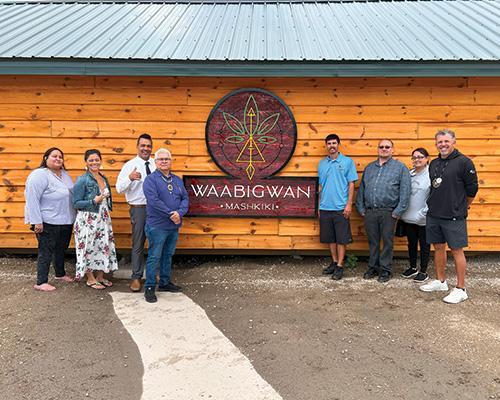
So if we can build bridges to the existing [general cannabis] organizations—most of them are well-intentioned and wanting to carry the water forward of indigenous cannabis equity, they just need the tools to be able to do it. So tools for our partners, tools for our tribes and always being reflective of the data that we’re collecting from Indian Country.
We were very fortunate to have speakers come in and join us on our stage for the summit from a great cross section of organizations.
Last Prisoner Project’s Jason Ortiz provided a great summary through a lightning talk specifically regarding youth and how we can involve youth in the conversation as opposed to exile them and gave some very great real-life examples from the work that he did formerly at Students for Sensible Drug Policy.
We had Marijuana Policy Project’s Matthew Schleich on our agenda. We were able to bring in Dasheeda Dawson [director of New York City Department of Small Business Services’ Cannabis NYC initiative]. The Justice Foundation has been a big supporter of the work that we do in advancing the legacy, the legal dialogue amongst Tribal Nations.
The list of partners that we actually had at the table is so much longer than that.
And really when I think about the level of collaboration that we’re doing, it’s like a pinch-myself kind of moment because to be able to have not one, not two, but three CANNRA [Cannabis Regulators Association] leaders present with their ears to the ground so that they can help us move that national conversation forward about protecting tribal rights within the national Cannabis Regulators Association.
I could sit there and just keep going on about all of these amazing people that believe in the work that the ICIA is doing and are throwing skin in the game to help us advance our mission and priorities.
The National Cannabis Festival is another one of those partners that has really been a game changer for us. … And that has springboarded into a larger partnership for us to host a lobby day specifically for tribes during the National Cannabis Festival this year in April.
NS: What are you looking to achieve with the lobby day?
MJO: To headhunt specific tribal leaders in key states where we need our voices heard, specific key committees that are overseen by senators and congressmen in our tribal constituencies’ areas and they’re not hearing from Tribal Nations on cannabis. We want to make sure that they know that we’re on top of this issue and that we’re being more proactive versus reactive on the future of cannabis federal legalization.
NS: What are the major obstacles that you feel Tribal Nations are facing?
MJO: The biggest obstacle is how we have this conversation in our community about whether or not we want to embrace this or whether or not we want to maintain the prohibition stance. Even many reservation communities are doing that—they’re opting out of this opportunity for economic and health equity with cannabis because of a lack of education and because of the carryover of the “reefer madness” that is associated with cannabis.
How do we get communities to start holding conversations about how our relationship has re-evolved with this plant medicine—because that’s really what the education process is showing is that at some point in many tribal histories, prehistories, is that they had a relationship with many sacred plants including, for some communities, cannabis.
The regulatory side of things is not as complex. Through the ICIA network, we’re advancing [demonstrations] through our partners for them to be able to see the seed-to-sale track-and-trace from the 30,000-foot viewpoint, so that they get a better understanding of what their governance responsibility over regulated cannabis will be.
Part of that also is helping them, through their RFP process, do better due diligence and vetting potential partners and consultants for their projects.
And from there, I think that we just kind of transition into the mainstream cannabis woes that all of our communities face, and that’s access to capital, finding the money or finding the right partners to have a successful project without giving up too much equity. That whole fun song and dance is what tribes are really struggling with. But we do have more tribal banks assessing cannabis opportunities and other banking systems realizing that tribal territories are an opportunity for them for a point of entry.
NS: What else is important that I didn’t ask about?
MJO: I guess we can’t underscore how much more organized tribes have become in just a relatively short amount of time.
We were called in to host a statewide summit in Wisconsin in 2022. Also, the Wisconsin tribes witnessed what’s happening with the Minnesota tribes being strategic in building the infrastructure even if they’re not cultivating yet, so that when they can or decide to start cultivating that they are ready.
Tribes working together I think is the silver lining of being organized through the ICIA because that’s where the intertribal commerce will be able to really materialize. Now tribes realize that ICIA can help us build a collective war chest to protect our rights in this emerging, multibillion-dollar industry. And protecting our rights means protecting our communities, our land, our water and our resources.
And we have a lot of power through tribal law and authority to protect all of those things for our community.
NS: Is there any message that you’d like to get out to the industry at large?
MJO: The message that I really want all of our entire global cannabis community to realize is that this Indigenous effort—that we lead with the ethos of protecting Mother Earth, and that we do the buildout of this industry in a morally and socially conscious way that also recognizes the environmental protections that need to happen—is that the mainstream cannabis industry players can be a part of our organization too. It’s not just for tribal communities.
We need values- and vision-aligned partners to help us do this work. And that’s from as simple as being becoming a friend of the ICIA and joining at that very base level to helping us build our infrastructure through sweat equity and through volunteerism, which we really could use.
Right now we have nobody helping us with social media. It’s really the little pieces of resources where you know our bandwidth is spread pretty thin.
We want to bring on interns and we want to grow our organization, which takes resources. And we’re in that startup phase of not wanting to grow too fast, and growing in a very healthy and sustainable way, and that’s just going to be a lot of effort on our part and a lot of external education. But we get asked the question quite often that if people that are not of Indigenous identity, can they join our organization, and the answer is very much “yes.”
And I guess just the gratitude to communities like the Shinnecock Nation who have blazed trails for other tribal communities and to be able to witness that it is possible that you can develop a program that your community completely and wholly embraces, and that there are going to be challenges along the way. But that’s what we are as Indigenous people, is resilient. We pick ourselves back up and we keep on going.
And it was truly an honor to go out there and be with my sister Chenae Bullock at that opening of Little Beach Harvest—but not just her, her entire community. They had a 90-year-old elder get up and speak at the opening ceremony, and you can hear the emotion in her voice when she said that she was proud of all of the young people for doing this. And then she took it to another level and said, “and I’m sure that our ancestors are smiling down, happy at what the young people are doing.” And we need that, we need that reassurance from our elders that we’re doing the right thing because sometimes we don’t know. Like even myself, I have a lot of guidance and leadership from my elders, and it empowers me to continue to do this work for generations that I’ll never even get to meet.
Realizing that that’s our duty and our responsibility because we had seven generations before us plan for us today, and we have a responsibility to do that for the next seven and beyond.

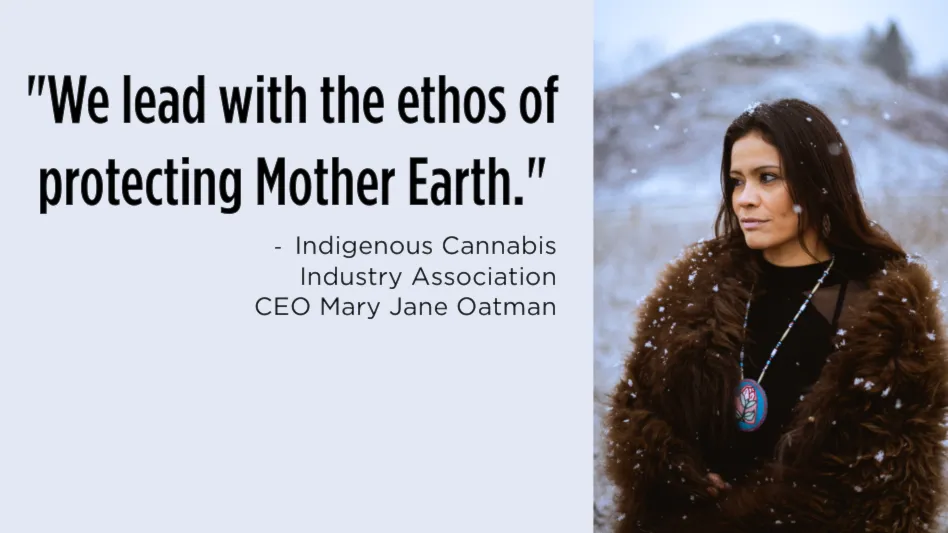


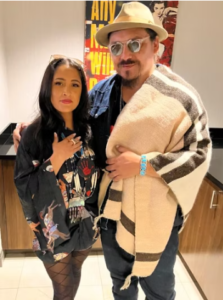
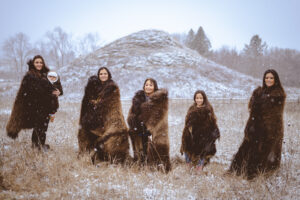




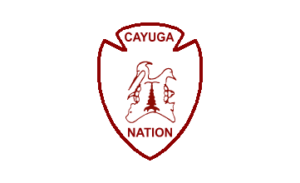

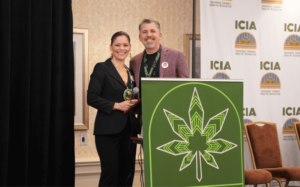




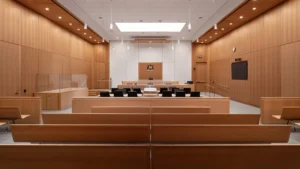
Comments are closed.